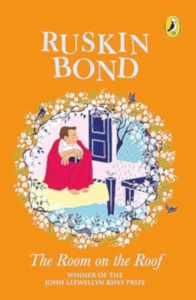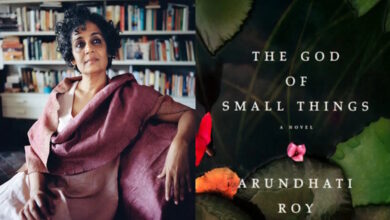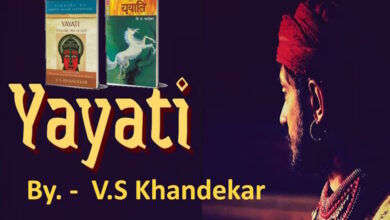The Room on the Roof by Ruskin Bond – Honest Review
The Room on the Roof by Ruskin Bond – A Timeless Tale of Youth, Identity & Freedom
 If you’re someone who enjoys simple stories filled with emotions, friendship, and self-discovery, The Room on the Roof by Ruskin Bond is a must-read. It’s not just a book; it’s an experience. It captures the confusion and beauty of growing up, especially in the vibrant chaos of India. This book is close to the heart of many Indian readers, not just for its story, but because of how honestly Ruskin Bond talks about loneliness, love, and finding one’s place in the world.
If you’re someone who enjoys simple stories filled with emotions, friendship, and self-discovery, The Room on the Roof by Ruskin Bond is a must-read. It’s not just a book; it’s an experience. It captures the confusion and beauty of growing up, especially in the vibrant chaos of India. This book is close to the heart of many Indian readers, not just for its story, but because of how honestly Ruskin Bond talks about loneliness, love, and finding one’s place in the world.
This review is a deep look into the novel – its themes, characters, writing style, and its lasting impact. We’ve also included FAQs, SEO tags, and everything you need to understand why this book still matters.
About the Author – Ruskin Bond
Ruskin Bond is one of India’s most beloved writers. Known for his simple, yet heartfelt storytelling, Bond has written stories that bring alive the hills, the people, and the everyday life of India. His stories often reflect nature, childhood, solitude, and friendship. Born in 1934, Bond has been awarded the Padma Shri and Padma Bhushan for his contribution to literature.
Overview of the Book The Room on the Roof
-
Title: The Room on the Roof
-
Author: Ruskin Bond
-
Published: 1956
-
Genre: Coming-of-age, Fiction
-
Target Audience: Teenagers, Young Adults, and anyone who appreciates emotional, human-centric stories
-
Setting: Dehradun, India
The Room on the Roof was Ruskin Bond’s first novel, written when he was just 17. It tells the story of Rusty, a sixteen-year-old Anglo-Indian boy who feels stuck in a strict European household. Rusty wants to break free and connect with the real India outside the walls of his guardian’s house. What follows is his emotional and physical journey as he finds friendship, love, heartbreak, and independence.
Summary of the Plot
Rusty lives in a European colony in Dehradun, under the guardianship of a rigid, conservative Englishman. His life is dull, restricted, and lonely. But Rusty feels a pull towards the colourful Indian life just beyond his gate. One day, he decides to step out – literally and metaphorically.
He meets local Indian boys – Somi, Ranbir, Suri – who welcome him into their world with warmth. They eat jalebis, visit temples, walk through bazaars – all things Rusty had only seen from afar. Rusty begins working at a school to support himself and moves into a small room on the roof – hence the title.
He also grows close to Meena, a kind young widow, and her son Kishen. But life takes a tragic turn, testing Rusty’s emotional strength. Through these ups and downs, Rusty learns what it means to truly live, love, and grow up.
Themes in The Room on the Roof
1. Search for Identity
At its core, The Room on the Roof is about Rusty’s search for who he really is. He doesn’t feel completely British nor entirely Indian. This struggle with cultural identity is something many readers, especially in post-colonial India, can relate to.
2. Freedom and Rebellion
Rusty’s decision to leave his guardian’s house represents every teenager’s desire for freedom. He wants to breathe, explore, and experience life for himself.
3. Friendship
Rusty’s friendships are the heartbeat of the story. His friends accept him without judgment. The joy and innocence in their bond remind us how important companionship is during teenage years.
4. Love and Loss
Rusty’s feelings for Meena are soft, sincere, and heartbreakingly innocent. His loss teaches him that pain, too, is part of growing up.
5. Cultural Contrast
The book shows the contrast between the cold, distant British lifestyle and the warmth of Indian culture. Through Rusty’s eyes, we feel the vibrancy of Indian streets, festivals, and relationships.
Character Analysis
1. Rusty
Rusty is sensitive, curious, and full of emotional depth. His transformation from a scared, obedient boy to a young man discovering life is beautifully written.
2. Somi, Ranbir, and Suri
These boys bring colour into Rusty’s grey world. They represent joy, freedom, and loyalty.
3. Meena
A graceful, tragic character. Meena’s kindness touches Rusty deeply and plays a key role in shaping his emotional maturity.
4. Mr. Harrison (Rusty’s Guardian)
A symbol of colonial control and repression, Mr. Harrison represents everything Rusty wants to break free from.
Writing Style of Ruskin Bond
Ruskin Bond’s writing is simple, elegant, and emotionally rich. He doesn’t use complex language, making it perfect for Indian readers of all ages. His love for nature, his deep understanding of human emotions, and his ability to describe Indian life with tenderness make The Room on the Roof a beautiful read.
Bond’s descriptions of small things – dusty roads, mango trees, crowded markets – are so vivid that they feel real. He lets you see India, not through a tourist’s eyes, but through the heart of someone who belongs.
Why Should You Read This Book The Room on the Roof?
-
Relatable emotions: If you’ve ever felt confused, lost, or stuck in life, Rusty’s story will speak to you.
-
Cultural connection: Indian readers will appreciate how Bond captures the spirit of Indian towns, people, and emotions.
-
Perfect for young readers: Teenagers, especially, will relate to Rusty’s struggles with identity and independence.
-
Timeless wisdom: Even though it was written in the 1950s, the emotions and questions in the book are still relevant today.
Criticisms and Weaknesses
While The Room on the Roof is beautiful in many ways, it does have its limitations:
-
The pacing can feel slow for readers who prefer action-packed plots.
-
Some characters, like Meena, could have been explored in more detail.
-
It’s more emotional and poetic than dramatic – which may not appeal to everyone.
However, these are minor issues in what is otherwise a heart-touching narrative.
Impact and Legacy
The Room on the Roof won the John Llewellyn Rhys Prize in 1957. It was one of the first books that gave voice to the mixed-race, post-colonial youth of India. Even today, it is often part of school syllabi and literary discussions.
For Ruskin Bond, this book was the beginning of a lifetime of writing. It laid the foundation for many more stories that spoke of love, hills, solitude, and childhood.
Final Verdict
The Room on the Roof is not just a novel; it’s a journey through the eyes of a teenager learning to be free. It is a story about discovering oneself amidst cultural confusion and emotional storms. For Indian readers, especially the youth, it offers comfort, reflection, and connection.
If you’re looking for a book that touches the heart, introduces you to the beauty of simple living, and reminds you of your own teenage dreams – this is the book for you. Buy it from Amazon
FAQs: The Room on the Roof by Ruskin Bond
Q1. Is The Room on the Roof based on Ruskin Bond’s real life?
Yes. The novel draws heavily from Bond’s own experiences growing up in Dehradun and feeling like an outsider in both British and Indian circles.
Q2. Is this book suitable for teenagers?
Absolutely. In fact, it’s a perfect read for teenagers dealing with issues of identity, freedom, and emotions.
Q3. What is the meaning of the title The Room on the Roof?
It refers to the room where Rusty lives after leaving his guardian’s house. It becomes a symbol of his independence and personal space.
Q4. Is the language of the book easy to understand?
Yes, Ruskin Bond writes in very simple and clear English. It’s suitable even for beginner readers.
Q5. What kind of book is this – emotional or adventurous?
It’s mostly emotional and reflective, though there are moments of fun and excitement. It’s more about the emotional journey than action.



